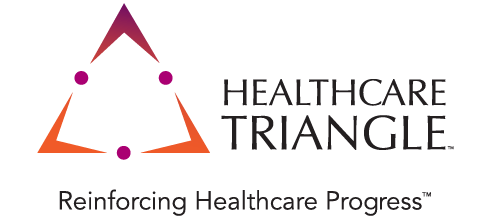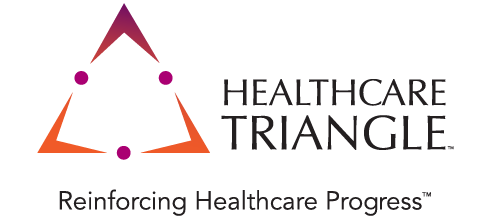COVID-19 Highlights the New Interoperability Imperative for Healthcare Information Technology
Healthcare Triangle
Apr 06, 2020
COVID-19 is a national health care crisis that requires efforts by every part of the U.S. healthcare sector to combat. Researchers, clinicians, policy makers, and others are asking the right questions to try and formulate the best strategy to mitigate the impacts of the crisis. They want to help the public by determining where and how should we strengthen containment measures as well as where and when can we re-open economically vital businesses. After two decades of massive investment by the public and private sectors in healthcare information technology, however, they remain hamstrung by a lack of meaningful interoperability and access to data.
The Data We Need
- 1. Confirmed COVID-19 Cases. To get a full picture of the COVID-19 epidemic at any point in time, it is necessary to have the number of confirmed COVID-19 cases. The federal government has issued coding guidance to improve consistency in reporting of confirmed case data, but because there is still not widespread testing, relying on confirmed cases is not enough.
- 2. Suspected COVID-19 Cases. Any “suspected” COVID-19 cases are coded as the reason for encounter such as cough, shortness of breath, or fever. As a result, suspected COVID-19 cases cannot be easily differentiated from other illnesses that present with one of these symptoms. It may be possible to estimate the number of suspected cases in the presence of an order for a COVID-19 test, except that when symptoms are mild, tests have not been consistently ordered because of the lack of availability.
- 3. Other Medical Conditions. Data is essential to accurately model risk of developing complications, identify cases where testing should occur but perhaps has not been done, and research COVID-19 complications. That means looking far beyond test results to data on demographics, chief complaint, problem list, medical history, allergies, medication lists, vitals, diagnostic results, and admission, discharge, and transfer events.
The data we need to fight the pandemic exists. It is documented every day in technology solutions used by the health care system, but the data is locked in thousands of silos across the nation.
Data Held Under Lock and Key
The data we need to fight the pandemic exists. It is documented every day in technology solutions used by the health care system, but the data is locked in thousands of silos across the nation. Policy makers and researchers would have an easier time penetrating a bank vault than they do obtaining key COVID-19 related data. Persistent interoperability and structural problems within health IT have not been solved, and so key data sits in systems controlled by various players in the health care industry.
The data we need to fight the pandemic exists. It is documented every day in technology solutions used by the health care system, but the data is locked in thousands of silos across the nation.
- Electronic Medical Records (EMRs). Certified EMRs contain nearly all the critical data for surveillance and research into COVID-19. Much of the data in the EMRs has a relatively standardized data architecture, making it technically possible to share and aggregate it. The problem lies in the fact that nearly every health care provider organization has its own instance of an EMR, and interoperability requirements for these systems necessitate that information must be shared primarily with other healthcare provider organizations. The requirements do not extend to ensuring clinical researchers and the federal government can get data from the EHRs.
- Lab Information Systems (LIS). Every commercial lab and most healthcare provider organizations have their own instance of a LIS. There are not requirements to share information between LIS systems, and the architecture of the data is not fully standardized to allow them to interoperate. Also, this data is limited in scope and includes demographics, lab orders, and results. It often omits symptoms, underlying health conditions, and more.
- Local and state surveillance systems. These tools do not have a standardized data architecture across geographic borders. Data, therefore, cannot be fully and easily shared between states, with the federal government, or with researchers. Also, this data is limited in scope and predominantly includes demographics, confirmed diagnoses, and immunizations.
- Health Information Exchanges (HIEs). Most healthcare providers organizations participate in health information exchanges. Theoretically, much of the important data to assess COVID-19 is passed through an HIE, but there are limitations here too. Often HIEs are state-based so that data with which they interact is geographically limited. National HIEs help to overcome this barrier, but participation in any HIE, let alone a national HIE, is not consistently in place for all healthcare providers. This leaves data again unable to be meaningfully shared within the health care industry or with government.
The Workarounds
With data locked in thousands of silos, the entire industry is forced to use workarounds. On March 29, 2020, the federal government requested that hospitals report COVID-19 testing data to the U.S. Department of Health and Human Services (HHS) directly by emailing spreadsheets. Privacy and security concerns with this approach are material, so on April 2, 2020, HHS relaxed the rules regarding data sharing with public health authorities in order to obtain more of this data from frontline healthcare providers. Even when hospitals comply with this request, data has to be compiled once by the provide organization, emails, and compiled again by HHS. Statistics and insights are at least a day old, if not older. With hundreds of new cases a day, 48 or 72 hours worth of information is critically necessary.
As another work around, some IT system vendors and other partners in health care and academia are now attempting to help consolidate data and more robustly analyze it. On March 23, the COVID-19 Healthcare Coalition, a collaborative with a goal in part to aggregate de-identified data to gain clinical insights and inform resource planning was formed. It includes well know technology companies as members including Amazon Web Services (AWS), athenahealth, CommonWell Health Alliance, Epic, Microsoft, and Salesforce. Cerner announced March 24 that it is working with the federal government to inform a national COVID-19 surveillance network and share relevant data elements with the consent of their customers.
If these IT vendors, academic partners, and government agencies can come together to use data to meaningfully inform policy and health care delivery decisions is yet to be seen. Data aggregation, normalization, and analysis on the overall population will undoubtedly be very challenging.
What Next?
If the needed data on patients with confirmed or suspected COVID-19 and other communicable diseases was required to be interoperable and shared among healthcare provider organizations and state and federal governments, these workarounds would not be necessary.
Meaningful interoperability of key data would allow for a quicker and more comprehensive response to disease outbreaks, saving money and lives.
Providers on the front line of care delivery would be able to quickly assess a patient's risk and comorbidities. Meaningful interoperability would alleviate additional administrative work for hospitals. Researchers could more quickly and with larger sample sizes assess risk, treatment effectiveness, early onset symptoms, and more. Policy health agencies would have near real time monitoring and tracking of COVID-19 rates of infection and mortality under a model that could be used with other communicable diseases going forward. Meaningful interoperability of key data would allow for a quicker and more comprehensive response to disease outbreaks, saving money and lives.
The Federal government and HHS can and must work with Health IT vendors and healthcare provider organizations to address this issue. Because of the structural problems present with data and interoperability within the health care system, we continue to wait for solutions at great expense to our country.
For further discussion or immediate healthcare project-related assistance, drop an email to info@healthcaretriangle.com or schedule a consultation.


